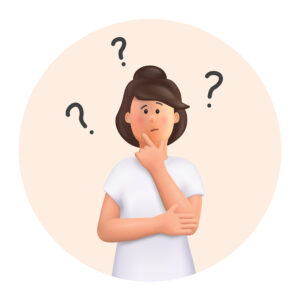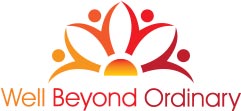Small Details Can Have a Large Impact
I thought I’d left enough time to figure out my way to the office of my new doctor here in Puerto Rico. But, somehow, I got confused. I arrived at the first office where I thought I should be only to find out this was not the case. The receptionist let me know I was close and gave me directions in Spanish. I needed to find a medical building one block up and to the right.
Fifteen minutes later, after going up and down stairs and back and forth to several offices, I was still lost. Finally, I rushed into a little deli in the lobby of the medical building, knowing that the time of my appointment was only minutes away. I looked at the cashier and said, “Por favor, necesito tu ayuda”, as I showed him the address on my phone.
My experience in Puerto Rico is one of people being willing to stop and say hello, ask how you are, or step away from something they are doing to help you out. It’s one of the many reasons I chose to move here. While I’d been able to express my need in Spanish, the overwhelmed expression on my face didn’t need translation. He called out to the cook that he’d be right back and escorted me through the lobby, down a walkway, and through the right door instead of trying to tell me how to get there.
After offering my thanks to him, I stepped inside and was handed five pages of forms to fill out…all in Spanish. This is normal here and it’s fine with me. The primary language is Spanish. It is my responsibility to learn it and navigate through the language and the culture. It is also part of how I continue to learn Spanish. The basic information was easy enough. Page two seemed to be a payment authorization for costs beyond what my insurance covers. I signed it but I wasn’t 100% sure I’d guessed correctly. From there, it got tricky. I could answer some of the basic health history questions but most of the last three pages were a mystery to me.
The Difference a Medical Translator Makes
When the nurse called me back, I gave it my best try to figure out what she was saying but between the experience of being lost and unable to easily ask for directions and other stressors, I was struggling to understand and to recall my Spanish. I gave short answers where I could. Then suddenly, an angel appeared. A bilingual third year medical student who gave up being in the room with the doctor to observe patient care so she could help me.
As she translated and took me through the forms, I answered the questions in far more detail than my one or two word Spanish attempts. I realized how much I had failed to understand and how sparse the information was that I could provide about my history and my reasons for my visit with the language barrier. One of the pages was information about whether I have an advanced directive. I’d just left it blank when I do have one.
Trying to find parking, navigate street signs, follow directions, ask for help, and fill out forms are all potential land mines that can escalate stress levels rapidly. I was just there for an annual checkup. Add in the stress of a serious medical condition, knowing how important it is to understand a diagnosis, treatment options, how to take medication, and what to do if side effects occur is almost unfathomable to me. We keep hearing that healthcare is a right. It needs to go further than this. Healthcare in a language you understand needs to be a right. How can a patient possibly consent to a clinical trial, treatment, procedure, or financial payment plan if these documents and plans are not in understandable language AND in their own language?
Doubling Down From This Lived Experience
I welcomed this experience. As a patient advocate and a consultant who has spent the past decade educating, advising, and calling for access to culturally and linguistically appropriate patient education, materials, and resources, living the experience of what it’s like to navigate healthcare in a language not my own amplified my understanding of the barriers patients face when English is not their first language. It confirmed my actions to date are in alignment with my commitment to improving the patient experience…for ALL patients. I was already on this path but this strengthened my resolve go even further and to get even louder to do everything I can to hold those in healthcare accountable for doing better for non-English speaking patients and patients with other accessibility challenges.
The Time for Workarounds is Over
While technology like Google Translate may seem like a quick fix, its limitations in capturing nuances and potential inaccuracies can lead to more problems than solutions. It takes time to enter a sentence or two and get the translation…time that clinicians, these days, simply do not have.
Because I had the benefit of a bilingual medical student, the time I had with the doctor could be focused 100% on my care, not wasted on intake questions. And because my doctor is bilingual, we were able to fully discuss my health directly without a third party interpreter. Relying on family members to translate is also not acceptable. There may be information that the patient doesn’t wish to disclose to family which will leave the clinician without details that could have a significant bearing on patient care. We also need to consider patients with other accessibility needs.
It’s worth noting that, even as someone who creates patient materials, resources, and tools to help patients be able to advocate better for themselves, in that stressful situation of trying to figure things out using my basic Spanish, I didn’t even think to ask if someone could translate. We can’t leave non-English speakers to their own devices to navigate the healthcare system. We can’t expect to increase diverse participation in clinical trials if we don’t proactively provide education, resources, and materials in multiple languages translated in culturally appropriate and accurate ways, addressing unique cultural concerns with feedback from patient advocates with that lived experience. And we must train, support, and encourage clinicians from diverse backgrounds so that healthcare teams reflect the reality of the U.S. population.
The time for equity is now.

